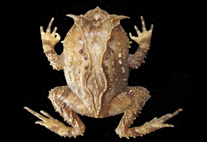Abstract
Tarsal tetramery is a rare condition within Carabidae, only found in some members of the endogean tribe Anillini and some cases of Gehringiini. Reduction of tarsomere numbers is also reported in endogean members of other families (e.g. Cur-culionidae or Staphylinidae). Recent fieldwork in southwestern Spain provided specimens of three new species of the en-dogean Anillini Typhlocharis Dieck, 1869: T. baeturica n.sp., T. scrofa n.sp. and T. tetramera n.sp. The new species share extreme body size reduction (less than 1.1 mm), a gula partially fused to the cephalic capsule, with diffuse lateral sutures, and four tarsomeres in all the legs. Tarsal tetramery is recorded for the first time within the genus Typhlocharis and it is contrasted with the described cases in Anillini. Typhlocharis scrofa n.sp. and T. tetramera n.sp. have club-shaped gono-coxites, reminiscent of the unguiform-like morphology observed in T. quadridentata (Coiffait, 1969), supporting the hy-pothesis of a transitional evolution of the shape of gonocoxites. The structure of the gula is studied within the genus and includes wide, narrow and diffuse morphologies. The implications of these features and data from the new species enable us to propose a reorganization of the systematics of the genus, creating and defining a new group of species, quadridentata group. An identification key for this species group is included. The new species provides more data on syntopic species and abundance rates, brief insights on the ecology of the genus.

